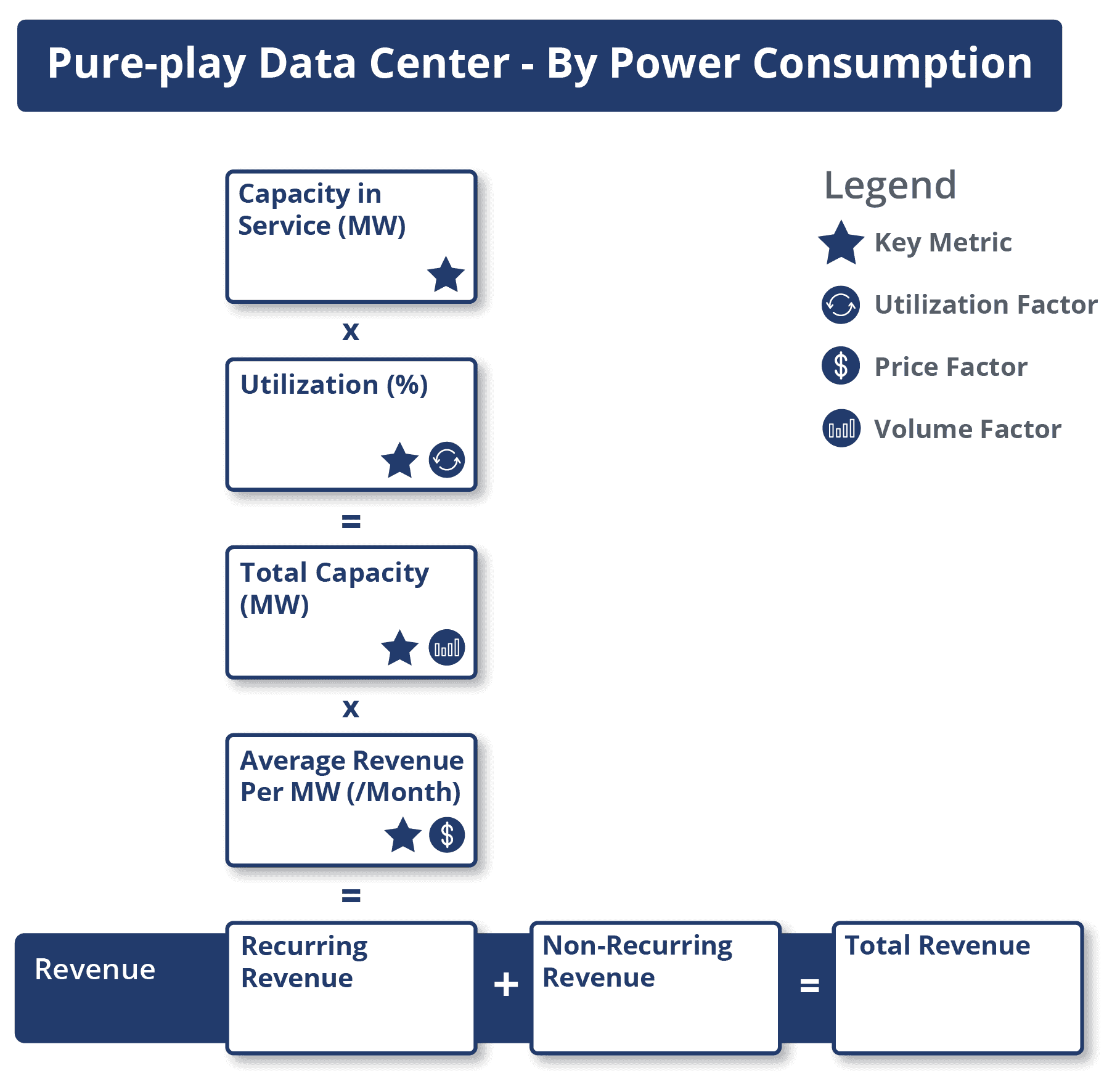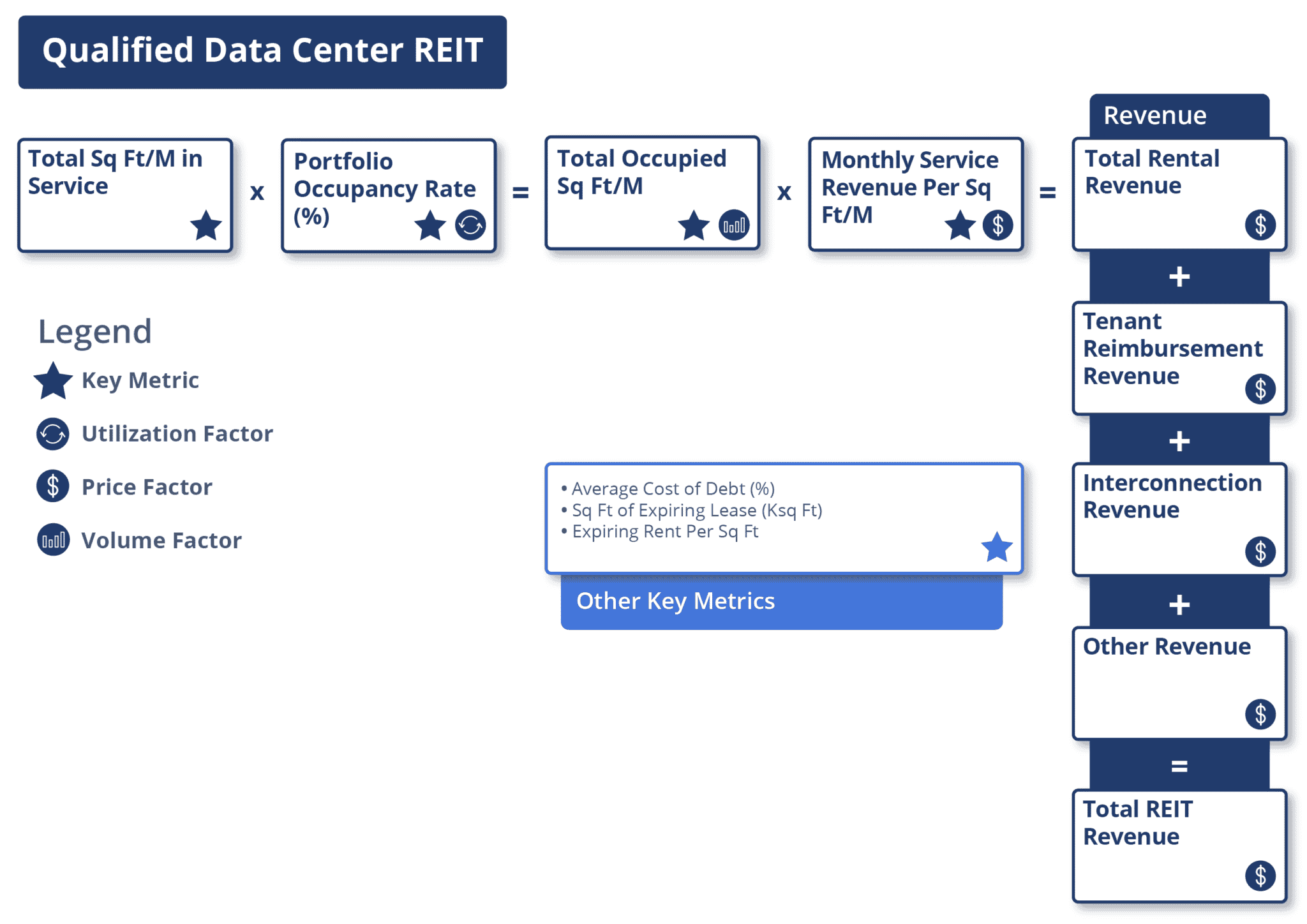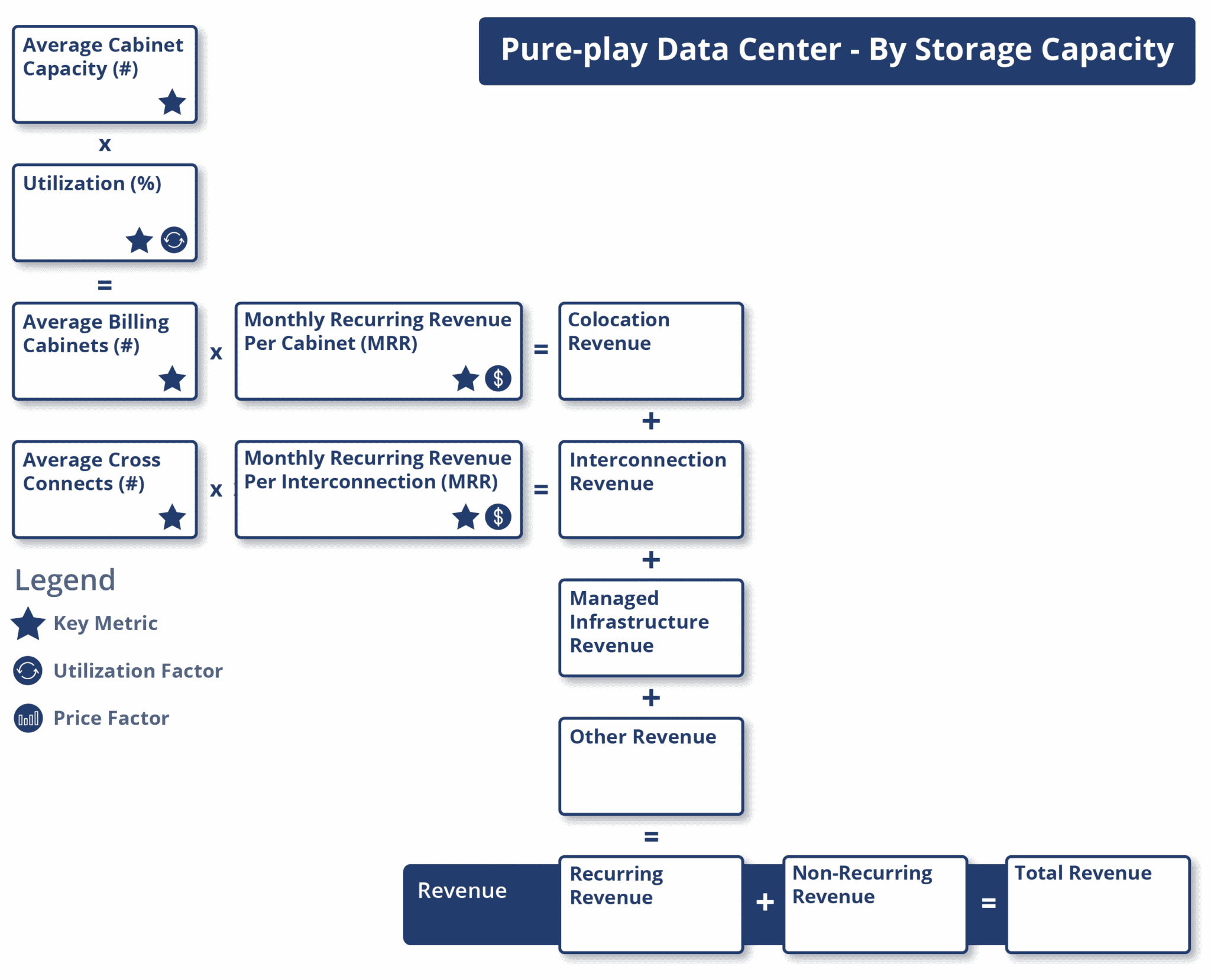Cabinet capacity is the total number of cabinets that are available at a data center, i.e., the total cabinet capacity at which the data center operates. Clients can combine and use multiple adjacent cabinets within a data center, based on their requirements.
Key performance indicators (KPIs) are the most important business metrics for a particular industry. When understanding market expectations for Data Centers, whether at a company or industry level, some Data Center KPIs to consider are:
Pure-play Data Center – By Storage Capacity
Pure-play Data Center – By Power Consumption
Data Center REITs
Visible Alpha’s Standardized Industry Metrics
To understand market expectations for the data center industry, a key information source is sell-side analyst estimates and consensus forecast data. The buy-side, sell-side, and public companies leverage this type of data to conduct competitive analysis, a type of analysis conducted by professional analysts that involves comparing standardized metrics of one company with those of similar companies. Because companies report metrics differently – and sometimes report on different metrics altogether – standardizing the key metrics for each company can be a cumbersome process.
Visible Alpha Insights includes analyst data, company data, and industry data at a level of granularity unparalleled in the market. Our industry data – Standardized Industry Metrics – enables market participants to quantify and compare market expectations for companies across 150+ industries.
Data as of January 2023
Industry KPI Terms & Definitions
Visible Alpha offers an innovative, integrated experience through real-time, granular consensus estimates and historical data created directly from the world’s leading equity analysts. Using a subset of the below KPIs, this data can help investors hone in on the key drivers of companies to uncover investment opportunities.
Pure-play Data Center – By Storage Capacity
Cabinet Capacity
Cabinet capacity is the total number of cabinets that are available at a data center, i.e., the total cabinet capacity at which the data center operates. Clients can combine and use multiple adjacent cabinets within a data center, based on their requirements.
Utilization Rate (%)
Utilization rate indicates the ratio of utilized cabinets in service. It showcases the percentage of cabinet capacity utilized.
Billed cabinets
Billed cabinets are the total number of cabinets that are used by clients.
Average Monthly Revenue Per Cabinet
Average monthly revenue per cabinet indicates revenue generated by a data center from each cabinet. It is calculated as total revenue divided by the average number of cabinets occupied.
Pure-play Data Center – By Power Consumption
Capacity In Service
Capacity in service is the total power capacity available at a data center to operate the facility, i.e., electricity consumption, specifically kilowatts (kW) and megawatts (MW).
Utilized Capacity
Utilized capacity is the total of all capacity sold in MW for utilization where the service has commenced.
Utilization Rate (%)
Utilization rate indicates the ratio of utilized capacity to capacity in service. It showcases the percentage of capacity utilized.
Contracted Capacity
Contracted capacity is the capacity for which clients are required to pay reservation fees.
Average Monthly Revenue per MW
Average monthly revenue per MW indicates revenue generated by a data center from each unit of megawatt (MW). Average monthly revenue per MW is calculated as total revenue divided by the average utilized capacity (MW).
Qualified Data Center REITs
Portfolio Occupancy Rate / Utilization (%)
Portfolio occupancy rate measures the occupancy rate or the percentage area of a REIT’s property that has been leased. It is calculated as leased space divided by total leasable area. The portfolio occupancy rate is a measure of success that a REIT has had in attracting tenants and leasing the space it owns. The higher the occupancy rate for a REIT over time (compared to its peers), the better.
Total Square Feet (K) / Area in Service
Total square feet (K) is the total amount of floor space available for rent to retail tenants.
Square Feet of Expiring Lease (K)
Square feet to expiring lease (K) is the number of square feet of lease which is expiring in a period.
Expiring Rent Per Square Feet
Expiring rent per square foot is the rent per square foot at the time of expiration of the lease.
Average Cost of Debt (%)
Average cost of debt (%) is a measure of the average interest rate paid to fund a retail business. It is calculated as interest expense paid divided by average debt (secured and unsecured loans and revolving credit facilities)
Download this guide as an ebook today:
Guide to Data Center KPIs for Investment Professionals
This guide highlights the key performance indicators for the data center industry and where investors should look to find an investment edge, including:
- Data Center Business Model & Diagram
- Key Data Center Metrics PLUS Visible Alpha’s Standardized Industry Metrics
- Available Comp Tables
- Industry KPI Terms & Definitions





